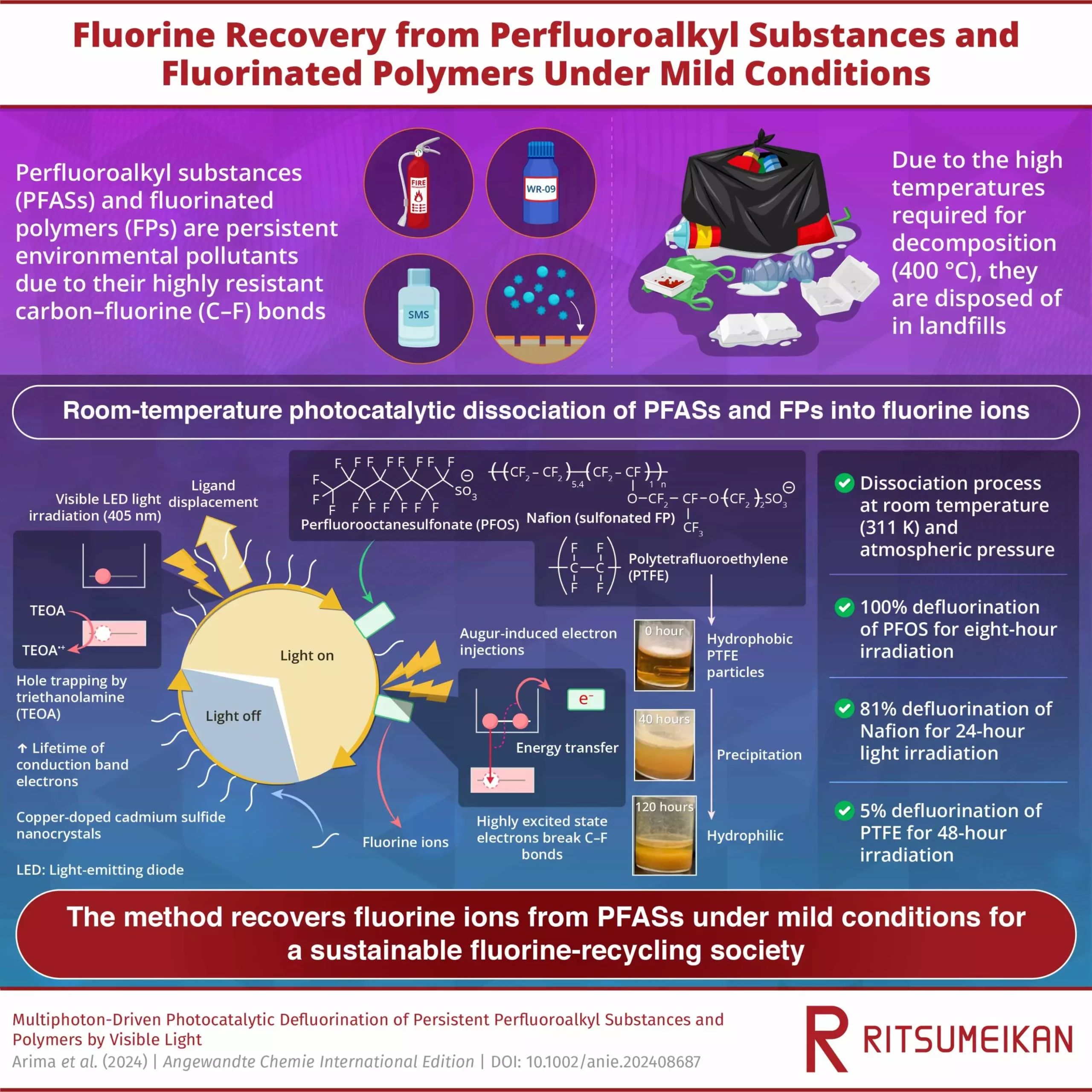The pervasive use of perfluoroalkyl substances (PFAS) in various industries has led to significant environmental and health concerns. These “forever chemicals” are known for their exceptional stability and resistance to water and heat, making them ideal for a wide range of applications. However, their persistent nature has resulted in widespread contamination of water, soil, and even human bodies, posing serious risks to our health and ecosystem.
Despite efforts to phase out PFAS production, the challenge lies in effectively treating these chemicals due to their resistance to conventional decomposition methods. Traditionally, PFAS decompose only at extremely high temperatures, making treatment processes expensive and impractical. As a result, products containing PFAS end up in landfills, further perpetuating the contamination cycle and posing long-term environmental risks.
Recently, researchers at Ritsumeikan University have proposed a groundbreaking room-temperature defluorination method that could revolutionize the treatment of PFAS and other fluorinated polymers. Their study, published in the journal Angewandte Chemie International Edition, details a photocatalytic approach using visible light to break down PFAS molecules into fluorine ions. This innovative method offers a promising solution for the sustainable decomposition of PFAS under gentle conditions.
The researchers’ approach involves irradiating cadmium sulfide (CdS) nanocrystals and copper-doped CdS (Cu-CdS) nanocrystals with visible LED light in the presence of perfluoroalkyl substances and triethanolamine (TEOA). The semiconductor nanocrystals generate high-energy electrons upon light exposure, which effectively break down the strong carbon-fluorine bonds in PFAS molecules. By optimizing the conditions of the photocatalytic reaction, the researchers achieved remarkable defluorination efficiency, reaching 100% for certain PFAS compounds within a short timeframe.
The successful development of this room-temperature defluorination technology holds significant promise for environmental sustainability. By effectively decomposing PFAS and recovering fluorine ions, we can reduce reliance on fluorine production and establish a more sustainable recycling process. This breakthrough not only addresses the immediate challenge of PFAS contamination but also contributes to the development of recycling technologies for critical elements used in various industries.
The innovative room-temperature defluorination method proposed by researchers at Ritsumeikan University represents a significant step forward in the treatment of PFAS and fluorinated polymers. By leveraging the power of photocatalysis and visible light, this technology offers a sustainable solution to the persistent environmental threat posed by PFAS. Moving forward, continued research and implementation of such innovative approaches will be vital in safeguarding our environment and promoting a healthier, more sustainable future for generations to come.


Leave a Reply